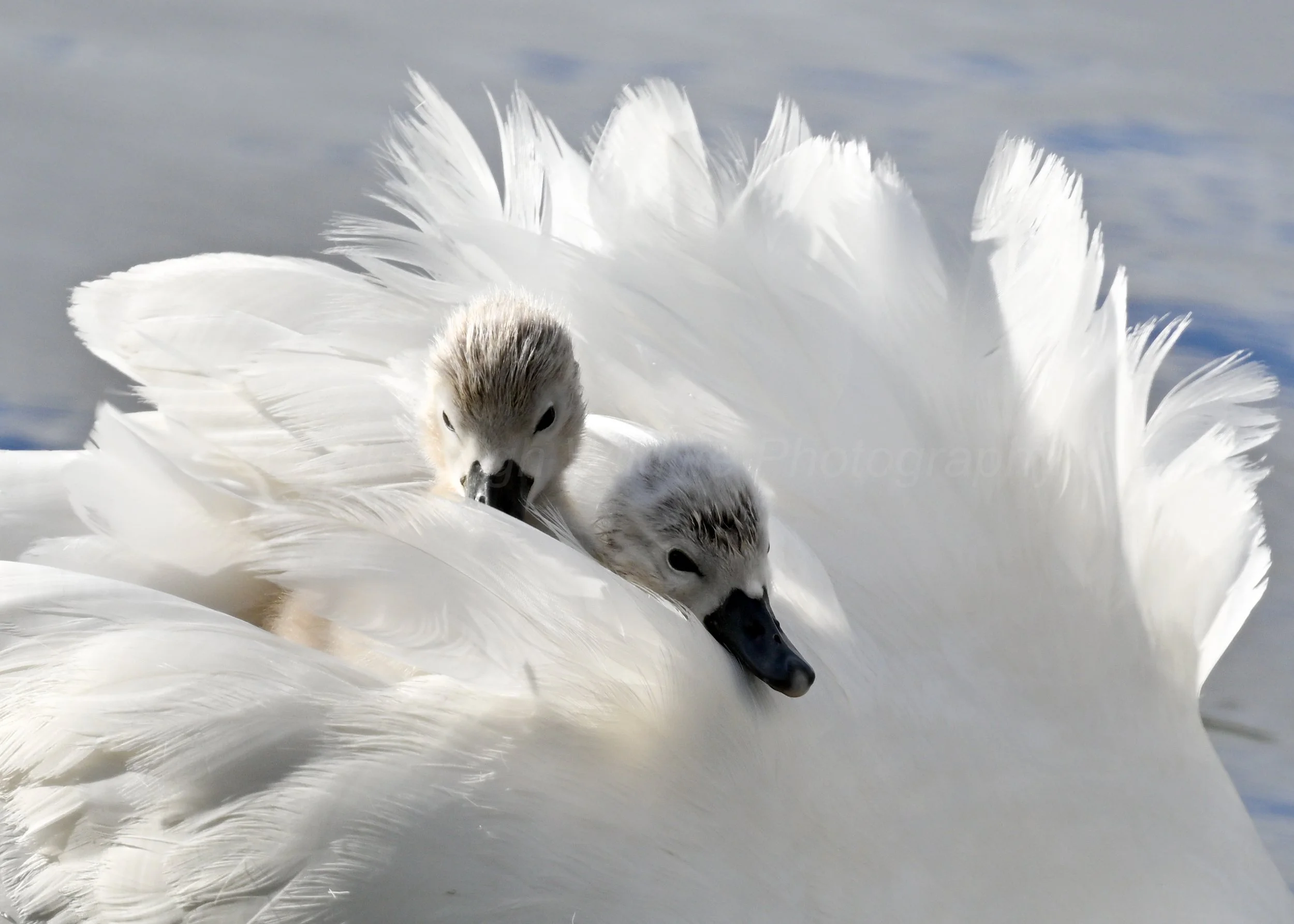Peak fledging time in West Cork.
It's been a really busy week with my wildlife photography. I have made trips to the coast, the river and the mountains in search of wildlife. I’ve shot diving juvenile Gannets that were feeding close to the shoreline, swans with their cygnets on my local river and Northern Wheatears up the nearby mountains.
In order to photograph diving Northern Gannets I photographed handheld. It allows me to manoeuvre the camera much more easily than using the camera on a tripod, even with a gimbal head. The image stabilisation on modern mirrorless cameras and in-lens stabilisation is amazing. These birds move quite a lot in the air, circling a fair bit and it’s good to focus on one bird at a time in order to get the symbolic dive in focus. I shot with a fully open (f/6.3) Nikon z 800 pf lens, as the weather was dull and the birds were a fair distance away. There was no need for increasing the depth of field at those distances. I shot at relatively high iso in order to brighten the birds plumage. A polariser would be great on this lens while photographing over the ocean but they are fairly expensive and I would prefer to spend the money on good glass instead. The Nikon z8 has excellent autofocus with bird detection and wide area AF, achieving a 100% success rate even when birds dive-bomb quickly. It's also beneficial to increase the frame rate to a minimum of ten frames per second to enhance your probability of capturing that ideal moment during the bird's dive, specifically when the bird's bill makes contact with the water's surface.
I have also managed to capture some stunning images of the swallows and sand martins during the past week. I found shooting sand martins in flight against wind much easier. Spent an hour and a half waiting for swifts at a nest site to enter the nest. I missed both flights into and out of the nest but got one of these fantastic little birds looking out of its nest hole, which felt like a success at the time. The swifts are still chasing thier mates at the moment and therefore aren’t feeding young in the nest yet so once the eggs have hatched, I should have a better chance as they’ll be much more busier around their nests.
I was lucky enough to see and photograph cute little cygnets (juvenile mute swans) riding on their mother’s back. They do this in order to rest i’m told, but it makes for a great photo. The male was closely behind as they travelled up the river towards me.. With the mums feathers fluffed up and backlit and the two cygnets peering out from the plumage, I was very happy with the shot, particularly the composition. The only negative was that I couldn’t get down to eye level as the river banks are very steep and dangerous. To enhance the overall composition of your wildlife photographs, consider positioning yourself at eye level with the animals. This technique often results in a more captivating background, with a pleasing blur effect that elevates the visual appeal of the image.
The challenge I have set myself this week is to get photos of adults feeding their young. Keeping an eye on areas around nests for the birds will give me the best opporunity as the chicks fledge yet remain dependant on their parents for their food. Foxes will by now be travelling around the fields with their cubs in tow, maybe practicing to hunt or just playing with other cubs or even just pestering their mother for milk. It’s been quite cold this summer in West Cork and i’m finding most animals are a bit behind with their breeding. No sign so far of fledged kingfishers or Irish dippers near the river. I’ll keep an eye out for them as they should be fledging any minute now. Both fledged at the end of May last year and it’s already half way through June.
I had been thinking of selling my old Nikon z6II, but today the new model, the Z6III was released which undoubtedly will reduce the used value of its predecessor so I have decided to keep it and will probably use it for macro stuff in the future. Ive also been struggling with precapture on my Z8. the mode eats the battery power as well as heating up the SD card that I use. I’ll be looking at faster cards to solve this problem and will let you know the results. I may have to add another battery to my collection as i’m finding precapture very useful with birds in flight but it really does use a lot of power.
Thankyou for reading my blog and good luck with your photography or just enjoying wildlife.
Mute Swan Cygnets catching a lift.

